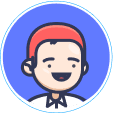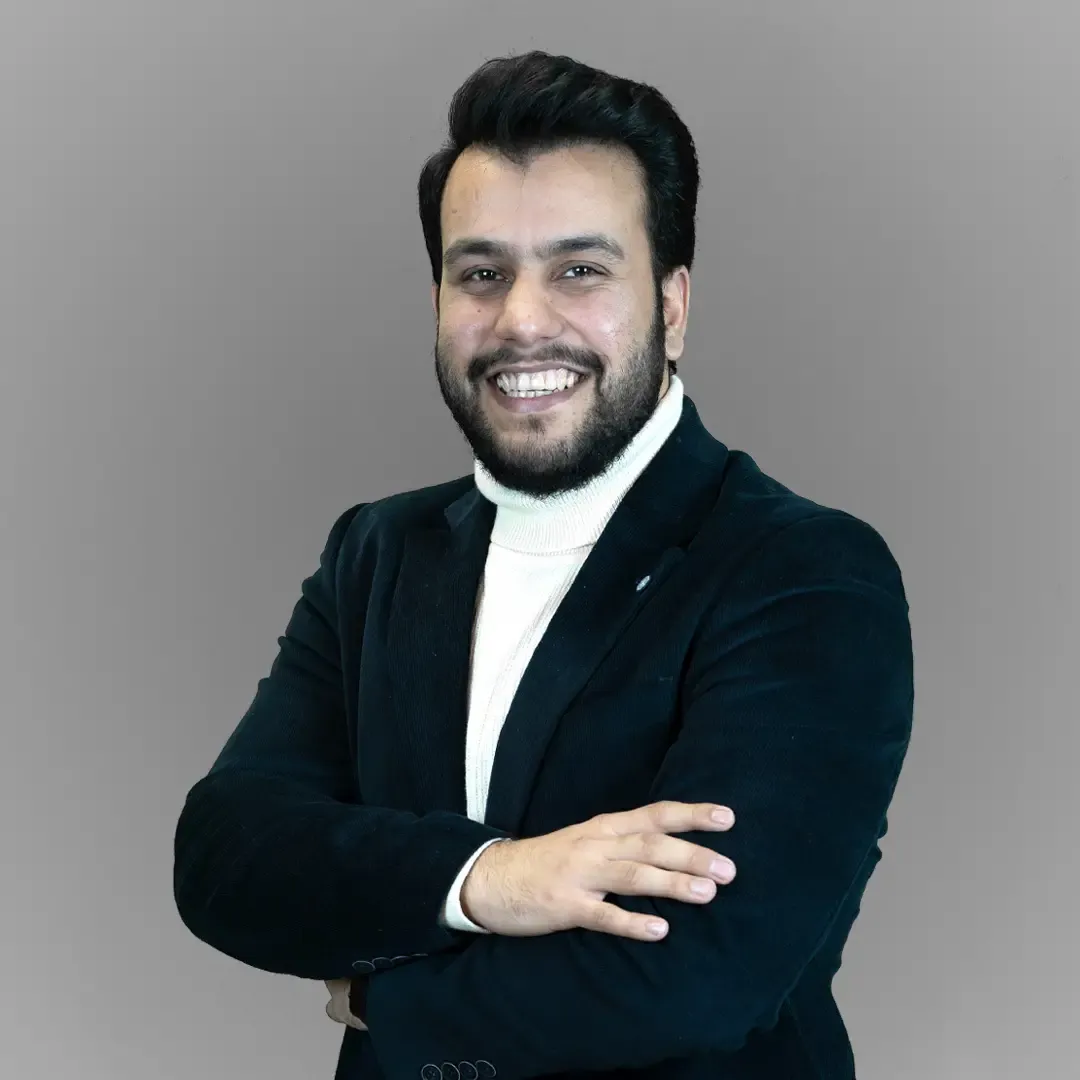
Top 5 Frameworks for GoLang Developer 2023
Table of Contents
Introduction
Are you ready to dive into the thrilling world of GoLang Development? Being a GoLang blockchain developer, you will discover the power to create high-performing and scalable programs, leveraging their simplicity, efficiency, and concurrency. Step into a world where clean syntax and robust feature coverage allow you to build powerful and reliable applications.
From developing web applications to building microservices, GoLang offers proficiency, speed, and a delightful developing experience.
Let's get into the ever-growing community of GoLang enthusiasts and discover the best frameworks and tools to get started within 2023. So, why is it essential to choose the proper framework for the Go language?
Frameworks provide a structured and organized approach to building applications, offering you a collection of pre-written code, libraries, and tools that you can leverage to create robust and scalable software. Frameworks are essential for many reasons:
-
Efficiency and Productivity
-
Consistency and Standardization
-
Time and Cost Savings
-
Community Support and Documentation
-
Security and Performance
In GoLang development, frameworks have gained significant traction due to the language's simplicity, efficiency, and focus on concurrency. They provide the tools and abstractions to build scalable web applications, microservices, APIs, and more.
This post explores the top five frameworks for GoLang developers and dwells into their features, use cases, and benefits. Whether starting a new project or seeking to enhance an existing GoLang application, these frameworks can help streamline your development process and empower you to build high-quality software efficiently. Let's discover the wealth of options available to carry out your GoLang developer skills.
Framework 1: Echo
Echo is a high-performance web framework for GoLang that offers a range of attributes designed to simplify web development. Its minimalistic design and focus on performance make it an attractive choice for building efficient and scalable web applications. The framework also provides extensive documentation and has a vibrant community, which means a Go programmer can have access to valuable resources, tutorials, and support when using the framework.
Key Features of Echo
Lightweight and high-performance: Echo is a minimalistic and highly optimized framework, delivering fast and efficient performance.
Easy to use: With its minimalistic design, Echo offers a simple and intuitive API, making it user-friendly for developers.
Robust routing: Echo's optimized routing engine ensures efficient and quick request handling, enabling fast response times.
Template rendering: Echo includes a built-in template rendering engine, enabling server-side rendering for dynamic content generation.
Middleware support: Echo offers middleware functionality, allowing developers to easily add custom logic for authentication, logging, and other request-related operations.
Echo Web App Use Cases
- Web applications: Echo is well-suited for developing a wide range of web applications, including RESTful APIs, content management systems, real-time chat applications, e-commerce platforms, and more.
- Microservices: Echo's lightweight nature makes it an excellent choice for building microservices that need to handle a large number of concurrent requests while maintaining high performance and efficiency.
- Prototyping and MVP development: Echo's simplicity and ease of use make it ideal for rapid prototyping and Minimum Viable Product (MVP) development, allowing developers to iterate and test their ideas quickly.
Framework 2: Gin
Gin is a lightweight web framework for GoLang known for its simplicity and performance. Gin has also gained popularity among GoLang developers due to its fast routing and flexibility. The standard library in Go has nearly all the functionalities you need to develop web applications in the net/http package. Using Gin, you get a framework with a martini-like API, easier error management, and high performance.
Key Features of Gin
Routing: Gin provides a flexible routing system allowing you to define routes and handle HTTP requests efficiently.
Middleware: Gin supports middleware functions, enabling you to add custom logic to the request-response cycle easily
JSON/XML Rendering: Gin simplifies rendering JSON or XML responses, making it seamless to build RESTful APIs.
Validation: It offers built-in validation features to handle user input and ensure data integrity.
Error Handling: Gin provides mechanisms to handle errors gracefully, returning appropriate HTTP responses.
Logging: The framework has built-in logging capabilities, making debugging and monitoring applications easy.
Performance: Gin is known for its high performance, thanks to its efficient request handling and minimal overhead.
Gin in GoLang Project Use Cases
- Building RESTful APIs: With its robust routing and middleware support, Gin is ideal for creating scalable and efficient APIs.
- Microservices: Gin's lightweight nature and fast performance make it suitable for building microservices.
- Web Applications: Developers can leverage Gin's simplicity and flexibility to develop robust web applications.
- Single-page Applications (SPAs): Gin can serve static files and handle client-side routing, making it suitable for SPAs.
Framework 3: Revel
Revel is a full-stack web framework for Go that follows the Model-View-Controller (MVC) architectural pattern. It provides a comprehensive set of features for building web applications, including routing, templating, ORM (Object-Relational Mapping), and more. The framework also promotes code organization and maintainability by offering a structured approach to application development.
Key Features of Revel
Convention over Configuration: Revel follows tradition over configuration, providing sensible defaults and predefined patterns. This minimizes the need for extensive structure, allowing you to focus on building their application logic.
Full-Stack Framework: Revel is a full-stack web framework that provides a comprehensive set of features out of the box. It includes routing, request handling, templating, ORM (Object-Relational Mapping), caching, and more, making it suitable for building robust and feature-rich web applications.
Scalability: Revel is suitable for handling high-traffic and high-performance applications. It provides:
- Automatic request routing.
- Efficiently mapping requests to controllers.
- Allowing developers to build scalable applications that can take many concurrent requests.
Hot Code Reloading: Revel supports hot code reloading, which means you can see code changes immediately without requiring manual recompilation or application restarting. This feature speeds up your development process and enables quick iterations.
Integrated Testing: Revel includes a built-in testing framework that simplifies the creation and execution of tests. You can write comprehensive test suites to verify the functionality of your applications, ensuring reliability and stability.
Modularity: Revel encourages modularity and follows the MVC (Model-View-Controller) architectural pattern. It clearly separates the application's business logic, presentation layer, and data persistence, enabling developers to write maintainable and scalable code.
Revel Use Cases
- Enterprise Applications: With features like ORM (Object-Relational Mapping), authentication, authorization, and security features, Revel offers you a solid foundation for building applications requiring user management, role-based access control, data persistence, and other enterprise-specific functionalities.
- Education and Learning: Revel's intuitive API, well-documented resources, and convention-based structure make it an excellent choice for teaching and learning Go. Its simplicity and ease of use allow beginners to grasp web application development concepts in Go without being overwhelmed by configuration details.
- Real-Time Applications: Revel is known for handling large numbers of concurrent connections and its support for WebSockets; it is suitable for developing real-time applications like chat applications, collaborative tools, multiplayer games, and real-time dashboards.
Framework 4: Fast HTTP
Fast HTTP is a compact version of the traditional HTTP profile optimized for speed in ideal traffic. The performance HTTP virtual server is merged with a Fast HTTP profile to speed up specific types of HTTP connections and reduce back-end HTTP server connections. However, Fast HTTP may not be an appropriate profile when network conditions are less than optimal. When load balancing Internet-based traffic, F5 usually recommends the HTTP profile.
Key Feature of Fast HTTP
HTTP/2 Support: Fast HTTP supports the HTTP/2 protocol, which offers significant performance improvements over its predecessor, HTTP/1.1. HTTP/2 introduces features like request multiplexing, header compression, and server push, which enhance data transmission efficiency and reduce latency.
Easy Integration: Fast HTTP provides a straightforward API, which you can integrate into existing systems. With its compatibility with Go frameworks and libraries, you can leverage its performance enhancements without significant changes to your codebase.
Advanced Caching Mechanisms: Fast HTTP includes built-in support for caching mechanisms, such as ETag, Last-Modified, and Expires headers. These mechanisms allow servers to cache responses and serve subsequent requests from the cache, reducing the load on backend systems and improving response times.
Fast HTTP Use Cases
- Packet-by-packet Functionality: Fast HTTP operates on a packet-by-packet level to make decisions and forward the packet as soon as possible after receipt of the packet. When you enable a Fast HTTP profile for a virtual server, the system only buffers enough data to parse packet headers.
- SNAT Functionality: Fast HTTP automatically applies a SNAT to all client traffic. The SNAT can be either a SNAT pool or the BIG-IP self-IP addresses configured for the VLAN closest to the node's subnet. From the node's perspective, all Fast HTTP-processed connections appear to come directly from the BIG-IP itself, and the source client IP information is not retained.
- OneConnect Functionality: Fast HTTP incorporates basic OneConnect functionality to minimize the latency of TCP three-way handshakes between the BIG-IP system and the node. Whenever possible, Fast HTTP chooses to re-use an existing connection to a node rather than create a new one.
Framework 5: Gorilla
The Gorilla Mux toolkit is among the most prevalent routers in the GoLang ecosystem. The most popular application of Gorilla is Geth due to its diverse package features. Gorilla offers widespread functionalities for router matching, static file servering, SPA servering, CORS request handling, middleware, and testing capabilities.
Gorilla Key Features
Compatibility with Standard HTTP: The Gorilla framework implements the http.Handler interface, making it compatible with the standard http.ServeMux. This allows seamless integration with existing HTTP infrastructure and libraries.
Flexible Request Matching: Requests can be matched based on various criteria, including URL host, path, path prefix, schemes, headers, query values, HTTP methods, or custom matches. This provides flexibility in defining routing rules and allows for fine-grained control over request handling.
Variable Support: URL hosts, paths, and query values can contain variables with optional regular expressions. This enables dynamic matching and parameter extraction from incoming requests, making handling dynamic or variable parts of URLs easier.
URL Building and Reversing: The framework provides functionality to build or "reverse" registered URLs. This feature assists in maintaining references to resources by automatically generating URLs based on registered routes. It helps ensure consistency and avoids hard-coding URLs throughout the application.
Subrouter Support: Routes can be sub-routers, allowing for nested routes within the main routing structure. You can only test Nested routes if the parent route matches, enabling the definition of groups of routes that share common conditions such as a host, path prefix, or other repeated attributes. This promotes code organization and optimization of request matching.
Gorilla Use Cases
- WebSocket Applications: Gorilla provides excellent support for WebSocket communication, including a package that simplifies WebSocket handling and provides functionality for bidirectional real-time communication between the server and clients.
- Single Sign-On (SSO) Integration: Gorilla's flexible routing and request matching capabilities are beneficial when integrating with Single Sign-On providers like OAuth or OpenID Connect. You can define routes for handling authentication callbacks, token exchanges, and user profile retrieval, simplifying the integration process.
- Session Management: Gorilla includes a package to facilitate session management in web applications. You can easily store and retrieve session data, set session options, and manage session lifetimes, which helps to implement user authentication, store user preferences, or maintain a session-based state.
Conclusion
The top 5 frameworks for GoLang developers in 2023 offer exciting opportunities for building high-performing and scalable applications. With Gin's simplicity and performance, Echo's lightweight design, Revel's full-stack capabilities, Fast HTTP's speed optimizations, and Gorilla's flexible routing, developers have a range of options to suit their project needs. Embrace these frameworks, tap into the thriving GoLang community, and unleash your creativity to create remarkable software that pushes boundaries. The future of GoLang development is thrilling.
Table of Contents
Introduction
Are you ready to dive into the thrilling world of GoLang Development? Being a GoLang blockchain developer, you will discover the power to create high-performing and scalable programs, leveraging their simplicity, efficiency, and concurrency. Step into a world where clean syntax and robust feature coverage allow you to build powerful and reliable applications.
From developing web applications to building microservices, GoLang offers proficiency, speed, and a delightful developing experience.
Let's get into the ever-growing community of GoLang enthusiasts and discover the best frameworks and tools to get started within 2023. So, why is it essential to choose the proper framework for the Go language?
Frameworks provide a structured and organized approach to building applications, offering you a collection of pre-written code, libraries, and tools that you can leverage to create robust and scalable software. Frameworks are essential for many reasons:
-
Efficiency and Productivity
-
Consistency and Standardization
-
Time and Cost Savings
-
Community Support and Documentation
-
Security and Performance
In GoLang development, frameworks have gained significant traction due to the language's simplicity, efficiency, and focus on concurrency. They provide the tools and abstractions to build scalable web applications, microservices, APIs, and more.
This post explores the top five frameworks for GoLang developers and dwells into their features, use cases, and benefits. Whether starting a new project or seeking to enhance an existing GoLang application, these frameworks can help streamline your development process and empower you to build high-quality software efficiently. Let's discover the wealth of options available to carry out your GoLang developer skills.
Framework 1: Echo
Echo is a high-performance web framework for GoLang that offers a range of attributes designed to simplify web development. Its minimalistic design and focus on performance make it an attractive choice for building efficient and scalable web applications. The framework also provides extensive documentation and has a vibrant community, which means a Go programmer can have access to valuable resources, tutorials, and support when using the framework.
Key Features of Echo
Lightweight and high-performance: Echo is a minimalistic and highly optimized framework, delivering fast and efficient performance.
Easy to use: With its minimalistic design, Echo offers a simple and intuitive API, making it user-friendly for developers.
Robust routing: Echo's optimized routing engine ensures efficient and quick request handling, enabling fast response times.
Template rendering: Echo includes a built-in template rendering engine, enabling server-side rendering for dynamic content generation.
Middleware support: Echo offers middleware functionality, allowing developers to easily add custom logic for authentication, logging, and other request-related operations.
Echo Web App Use Cases
- Web applications: Echo is well-suited for developing a wide range of web applications, including RESTful APIs, content management systems, real-time chat applications, e-commerce platforms, and more.
- Microservices: Echo's lightweight nature makes it an excellent choice for building microservices that need to handle a large number of concurrent requests while maintaining high performance and efficiency.
- Prototyping and MVP development: Echo's simplicity and ease of use make it ideal for rapid prototyping and Minimum Viable Product (MVP) development, allowing developers to iterate and test their ideas quickly.
Framework 2: Gin
Gin is a lightweight web framework for GoLang known for its simplicity and performance. Gin has also gained popularity among GoLang developers due to its fast routing and flexibility. The standard library in Go has nearly all the functionalities you need to develop web applications in the net/http package. Using Gin, you get a framework with a martini-like API, easier error management, and high performance.
Key Features of Gin
Routing: Gin provides a flexible routing system allowing you to define routes and handle HTTP requests efficiently.
Middleware: Gin supports middleware functions, enabling you to add custom logic to the request-response cycle easily
JSON/XML Rendering: Gin simplifies rendering JSON or XML responses, making it seamless to build RESTful APIs.
Validation: It offers built-in validation features to handle user input and ensure data integrity.
Error Handling: Gin provides mechanisms to handle errors gracefully, returning appropriate HTTP responses.
Logging: The framework has built-in logging capabilities, making debugging and monitoring applications easy.
Performance: Gin is known for its high performance, thanks to its efficient request handling and minimal overhead.
Gin in GoLang Project Use Cases
- Building RESTful APIs: With its robust routing and middleware support, Gin is ideal for creating scalable and efficient APIs.
- Microservices: Gin's lightweight nature and fast performance make it suitable for building microservices.
- Web Applications: Developers can leverage Gin's simplicity and flexibility to develop robust web applications.
- Single-page Applications (SPAs): Gin can serve static files and handle client-side routing, making it suitable for SPAs.
Framework 3: Revel
Revel is a full-stack web framework for Go that follows the Model-View-Controller (MVC) architectural pattern. It provides a comprehensive set of features for building web applications, including routing, templating, ORM (Object-Relational Mapping), and more. The framework also promotes code organization and maintainability by offering a structured approach to application development.
Key Features of Revel
Convention over Configuration: Revel follows tradition over configuration, providing sensible defaults and predefined patterns. This minimizes the need for extensive structure, allowing you to focus on building their application logic.
Full-Stack Framework: Revel is a full-stack web framework that provides a comprehensive set of features out of the box. It includes routing, request handling, templating, ORM (Object-Relational Mapping), caching, and more, making it suitable for building robust and feature-rich web applications.
Scalability: Revel is suitable for handling high-traffic and high-performance applications. It provides:
- Automatic request routing.
- Efficiently mapping requests to controllers.
- Allowing developers to build scalable applications that can take many concurrent requests.
Hot Code Reloading: Revel supports hot code reloading, which means you can see code changes immediately without requiring manual recompilation or application restarting. This feature speeds up your development process and enables quick iterations.
Integrated Testing: Revel includes a built-in testing framework that simplifies the creation and execution of tests. You can write comprehensive test suites to verify the functionality of your applications, ensuring reliability and stability.
Modularity: Revel encourages modularity and follows the MVC (Model-View-Controller) architectural pattern. It clearly separates the application's business logic, presentation layer, and data persistence, enabling developers to write maintainable and scalable code.
Revel Use Cases
- Enterprise Applications: With features like ORM (Object-Relational Mapping), authentication, authorization, and security features, Revel offers you a solid foundation for building applications requiring user management, role-based access control, data persistence, and other enterprise-specific functionalities.
- Education and Learning: Revel's intuitive API, well-documented resources, and convention-based structure make it an excellent choice for teaching and learning Go. Its simplicity and ease of use allow beginners to grasp web application development concepts in Go without being overwhelmed by configuration details.
- Real-Time Applications: Revel is known for handling large numbers of concurrent connections and its support for WebSockets; it is suitable for developing real-time applications like chat applications, collaborative tools, multiplayer games, and real-time dashboards.
Framework 4: Fast HTTP
Fast HTTP is a compact version of the traditional HTTP profile optimized for speed in ideal traffic. The performance HTTP virtual server is merged with a Fast HTTP profile to speed up specific types of HTTP connections and reduce back-end HTTP server connections. However, Fast HTTP may not be an appropriate profile when network conditions are less than optimal. When load balancing Internet-based traffic, F5 usually recommends the HTTP profile.
Key Feature of Fast HTTP
HTTP/2 Support: Fast HTTP supports the HTTP/2 protocol, which offers significant performance improvements over its predecessor, HTTP/1.1. HTTP/2 introduces features like request multiplexing, header compression, and server push, which enhance data transmission efficiency and reduce latency.
Easy Integration: Fast HTTP provides a straightforward API, which you can integrate into existing systems. With its compatibility with Go frameworks and libraries, you can leverage its performance enhancements without significant changes to your codebase.
Advanced Caching Mechanisms: Fast HTTP includes built-in support for caching mechanisms, such as ETag, Last-Modified, and Expires headers. These mechanisms allow servers to cache responses and serve subsequent requests from the cache, reducing the load on backend systems and improving response times.
Fast HTTP Use Cases
- Packet-by-packet Functionality: Fast HTTP operates on a packet-by-packet level to make decisions and forward the packet as soon as possible after receipt of the packet. When you enable a Fast HTTP profile for a virtual server, the system only buffers enough data to parse packet headers.
- SNAT Functionality: Fast HTTP automatically applies a SNAT to all client traffic. The SNAT can be either a SNAT pool or the BIG-IP self-IP addresses configured for the VLAN closest to the node's subnet. From the node's perspective, all Fast HTTP-processed connections appear to come directly from the BIG-IP itself, and the source client IP information is not retained.
- OneConnect Functionality: Fast HTTP incorporates basic OneConnect functionality to minimize the latency of TCP three-way handshakes between the BIG-IP system and the node. Whenever possible, Fast HTTP chooses to re-use an existing connection to a node rather than create a new one.
Framework 5: Gorilla
The Gorilla Mux toolkit is among the most prevalent routers in the GoLang ecosystem. The most popular application of Gorilla is Geth due to its diverse package features. Gorilla offers widespread functionalities for router matching, static file servering, SPA servering, CORS request handling, middleware, and testing capabilities.
Gorilla Key Features
Compatibility with Standard HTTP: The Gorilla framework implements the http.Handler interface, making it compatible with the standard http.ServeMux. This allows seamless integration with existing HTTP infrastructure and libraries.
Flexible Request Matching: Requests can be matched based on various criteria, including URL host, path, path prefix, schemes, headers, query values, HTTP methods, or custom matches. This provides flexibility in defining routing rules and allows for fine-grained control over request handling.
Variable Support: URL hosts, paths, and query values can contain variables with optional regular expressions. This enables dynamic matching and parameter extraction from incoming requests, making handling dynamic or variable parts of URLs easier.
URL Building and Reversing: The framework provides functionality to build or "reverse" registered URLs. This feature assists in maintaining references to resources by automatically generating URLs based on registered routes. It helps ensure consistency and avoids hard-coding URLs throughout the application.
Subrouter Support: Routes can be sub-routers, allowing for nested routes within the main routing structure. You can only test Nested routes if the parent route matches, enabling the definition of groups of routes that share common conditions such as a host, path prefix, or other repeated attributes. This promotes code organization and optimization of request matching.
Gorilla Use Cases
- WebSocket Applications: Gorilla provides excellent support for WebSocket communication, including a package that simplifies WebSocket handling and provides functionality for bidirectional real-time communication between the server and clients.
- Single Sign-On (SSO) Integration: Gorilla's flexible routing and request matching capabilities are beneficial when integrating with Single Sign-On providers like OAuth or OpenID Connect. You can define routes for handling authentication callbacks, token exchanges, and user profile retrieval, simplifying the integration process.
- Session Management: Gorilla includes a package to facilitate session management in web applications. You can easily store and retrieve session data, set session options, and manage session lifetimes, which helps to implement user authentication, store user preferences, or maintain a session-based state.
Conclusion
The top 5 frameworks for GoLang developers in 2023 offer exciting opportunities for building high-performing and scalable applications. With Gin's simplicity and performance, Echo's lightweight design, Revel's full-stack capabilities, Fast HTTP's speed optimizations, and Gorilla's flexible routing, developers have a range of options to suit their project needs. Embrace these frameworks, tap into the thriving GoLang community, and unleash your creativity to create remarkable software that pushes boundaries. The future of GoLang development is thrilling.





